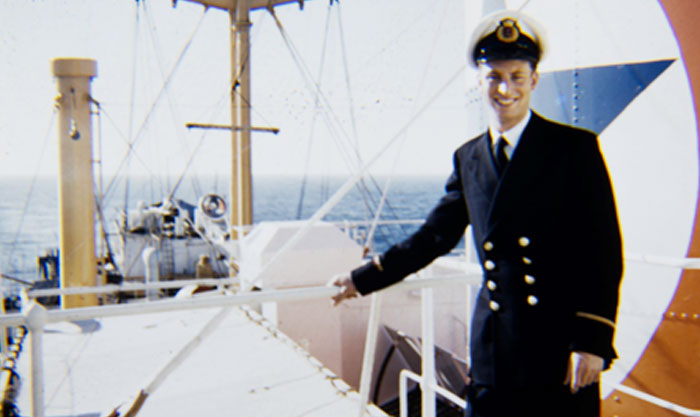By Dick Milanese
With Russia invading the Ukraine, we are hearing about the terrible effect of bombing and missile attacks and how they affect the residents who are suffering the attacks. It also brings back to mind the Blitzkrieg that the Germans used against Britain in WW II. One of our parishioners, Robert Brown (pictured below), was a child during those times and his story is both interesting and informative.

Robert was three years old at the start of WW II and only nine when it ended, so his perspective was that of a young child in those terrible times. He was born and lived in Bedford, England, which was about 50 miles from London. While it was far enough away from London that it was not a prime target and was only directly bombed once, it still suffered the effect of the bombing on everyday life in a war zone. Rationing was imposed on food, clothing, fuel and most daily necessities. Trips to London were rare because of the air raids. Everywhere there was a state of blackout where curtains were closed at night and blackout curtains were required so no light escaped to serve as a target for night bombing. Bedford was a prime location for an airbase, only 100 miles from the east coast of England, and only 800 to 1000 miles from targets in Germany. United States B17 bombers were stationed there. Robert was fascinated by the bomber crews and he would ask them for gum when he met them at the R&R club in town. He would ask them, “Have you got any gum chum?” So, even though it was only bombed once, it remained a potential target for bombing.
The few cars that civilians could operate had their headlights hooded to cut down on light which might attract attacks. Bedford was used as a refugee spot for children to escape the bombing in the London area. Between 20,000 to 30,000 people were killed during German attacks and casualties were so great that everyone felt the impact of the raids. Initially the raids were daytime attacks, but when the Royal Air Force during the Battle of Britain took control of the air space, the Germans changed to night time bombing, and then rocket attacks. The rockets were programmed to cover a certain distance from launch but had no guidance system so the risk was greater with them for hitting random targets as their trajectories were affected by wind and imperfect aiming. The bombers followed the Thames River at night using its reflection to help navigation.
Since fuel was difficult to get, there were no buses, so students had to walk to school, often over a mile each way. Of course, they could hear and see the B17’s taking off and then watch the wounded aircraft return from their attacks.
The effects of the war lasted for years after it was over, as England had to replace the infra-structure and buildings destroyed during the five years of attacks. They had to rebuild roads, schools, factories, businesses and housing, removing the rubble and building new structures. Robert went to work when he was 15 and bicycled four miles each way to work. At 16, he went to work as an engineering apprentice at a Bedford company. He worked five days a week from 7 am to 5 pm for 27 shillings a week (about 7.5 cents an hour) and attended Mander College studying Mechanical Engineering. During the war and after, he experienced the horrors and difficulties of the attacks and developed lasting memories of those times.
During the recovery years, England continued the draft, requiring every male 18 years of age to register and join the military unless they were in an apprentice program. Apprentices could delay service until they were 21 if they were in school full time. Their choice was to serve two years in the Army, Navy or Air Force, or five years in the British Merchant Navy. England was and still is dependent on foreign goods and the merchant marine to bring them in, and had to rebuild its merchant fleet in the post war years. Robert chose the Merchant Navy where he served as an Engineering Officer and did tours around the world. After he completed his Navy tour, he held various jobs as a research and development engineer until 1985 when he started his own company supplying bathroom fixtures until he retired. He credits his experiences during and after the war as teaching him to be frugal, careful not to waste and to appreciate what he had.
He married when he was 21 and his wife Pamela passed away after 41 years. They had two children. In the summer of 2001, after Pamela passed away, he took a cruise to Alaska. There he met Jackie, who was widowed and was on the cruise with her mother. They hit it off and after corresponding for 15 months they married in 2002 and he moved to Arizona. In doing so, he acquired a whole new family and his first grandchildren and great grandchildren. Together, before the COVID outbreak, they were very active at St Thomas More parish singing in the choir and in the YES (Young Enthusiastic Seniors) group. They also traveled extensively around the world. He developed into an outstanding photographer and, together with Jackie, developed beautiful travel videos. He makes the movies and then incorporates them with stills that Jackie captures, adding narratives and music to make beautiful films of what they did and where they went.
